Day 2 of a two day Private Tour for a guest from Hong Kong, along the North Norfolk coast looking for a good selection of both our commoner breeding birds and any more interesting species we might come across. We were also trying to get photographs of as many of the birds as possible too. It was a cloudy start, even with a few early spits of drizzle first thing, but it brightened up through the morning and was warm and sunny again by the afternoon.
Our first destination for the day was Wells Woods – we hoped to have a quick look round before the car park got too busy, although with the cloudier weather it would not be as bad as it was over the bank holiday weekend. As we drove down the Beach Road, we noticed some partridges feeding on the mini railway track so we pulled up to look at them. They were Grey Partridges, a small family party, and we watched them for a few minutes as they fed on the short grass alongside the railway.
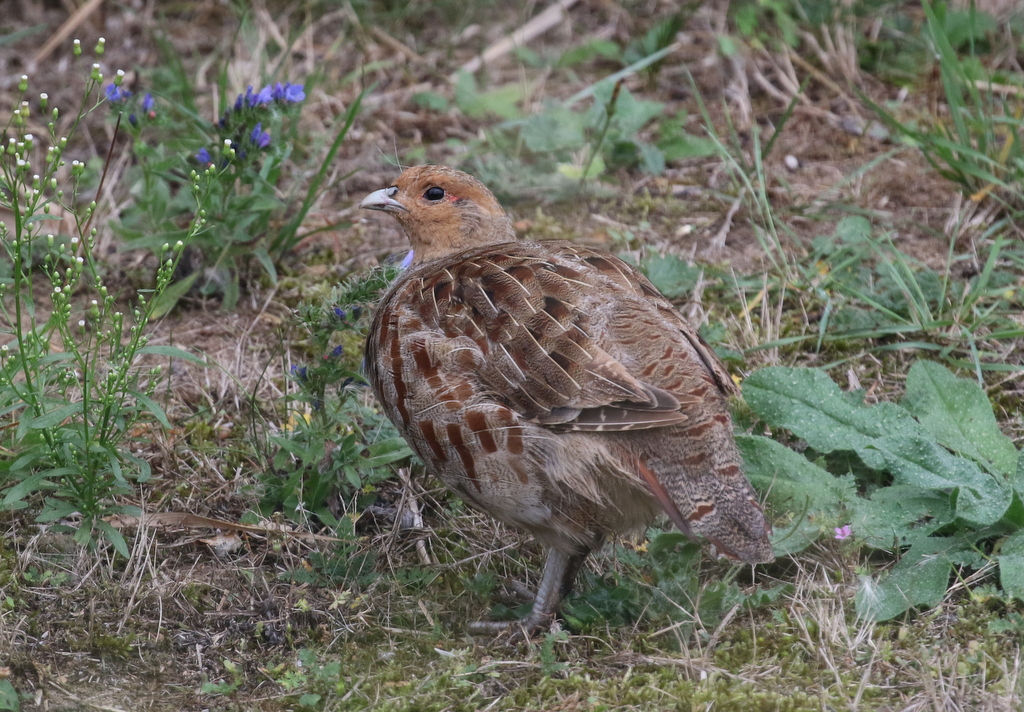
Having parked in the beach car park, we set off down the track into the woods. We stopped briefly by the boating lake where there were several Little Grebes out on the water, including an adult with a rather noisy juvenile begging to be fed over by the reeds. A lone Tufted Duck out in the middle was a rather dull eclipse drake with grey flanks.
As we walked into the birches, we could hear Jays calling, and we looked up to see one flying through the trees. There seemed to be a pair and we followed them for a few minutes, until a couple of dog walkers came through and they flew off into the woods. A Wren was singing in the bushes and proved more obliging.
We quickly found a flock of Long-tailed Tits, and stopping to look through them we found Coal, Blue and Great Tits with them. A Garden Warbler appeared in the flock too, in the top of a dense sallow, but stayed mostly well hidden in the leaves. We watched a Treecreeper climbing up the trunk of one of the trees. As the flock moved on towards the main path, out into the open, we had good views of a couple of Goldcrests too, before all the birds moved up into the top of the pines.
A little further on, we found another flock. As well as tits, there were a couple of Blackcaps and Chiffchaffs here. In the trees just beyond, we heard a Pied Flycatcher calling and saw it make a quick sally out of the dense sallows, but it disappeared straight back in and was lost to view. It seemed to calling from the back of the trees now, so we walked round to the other side.
The flock seemed to have moved on, and we thought the flycatcher had disappeared too. We had a look round, and scanned the trees, then suddenly the Pied Flycatcher appeared again on the front of the same sallow. It kept disappearing into the dense foliage, but came out into the open a couple of times, and perched nicely where we could see it. After following it for a while, we realised there was more than one and triangulating the calls there were actually at least three of them. Pied Flycatchers are just passage migrants here, passing through on their way from Scandinavia to Africa for the winter.
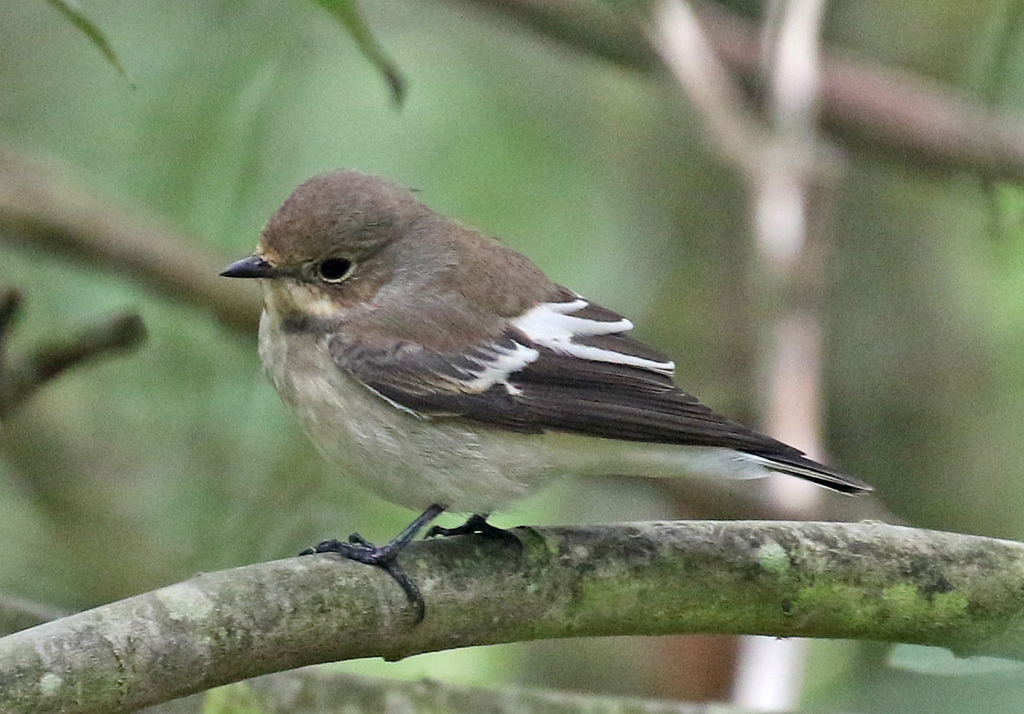
When we got back to the car park, it was already filling up fast. We decided to move on, and drove west along the coast to Titchwell. A flock of Long-tailed Tits made their way through the trees in the car park as we headed out onto the reserve. It was the Titchwell weekly ‘moth morning’, so we had a quick look at this morning’s haul from the moth traps, including an ever popular Poplar Hawkmoth at one end of the size scale, and a couple of tiny micro moths too.
We made our way out along Fen Trail first, stopping to listen to a Cetti’s Warbler shouting at us from the bushes behind Fen Hide. It remained very well hidden, deep in the undergrowth as they usually like to do.
There were plenty of ducks on Patsy’s Reedbed, several Tufted Ducks and Common Pochard, lots of Mallard and Gadwall and a single eclipse drake Wigeon, but no sign of the Garganey which had been reported there earlier. A Little Grebe was diving on the edge of the reeds right down in front of the screen.

The Autumn Trail is open at this time of year, so we continued right round to the back of the Freshmarsh. The Spoonbills often like the back where the water is deeper, but today they were across the other side, asleep on one of the islands closer to the main path, three of them. We could hear Bearded Tits calling, but they remained hidden down in the reeds.
A young Water Rail appeared on the far side of the mud in front of the viewpoint. It was picking its way in and out of the reeds in typical fashion at first, but then started to walk across to the near side. It was rather nervous out in the middle on the open mud, started running, and then flew across into the reeds on our side out of view.

It was time for lunch now, and as we walked back towards the ‘tank road’, we looked up to see two Common Buzzards circling over in the sunshine. Back by the visitor centre, a Chaffinch was on the feeders and a Dunnock was looking for scraps below.

We made good use of the picnic tables in the picnic area for lunch. Just a couple of years ago, Willow Emerald damselflies were unknown here but the pace of colonisation has accelerated and they now seem to be doing well. While we were eating, we saw several around the sallows here.
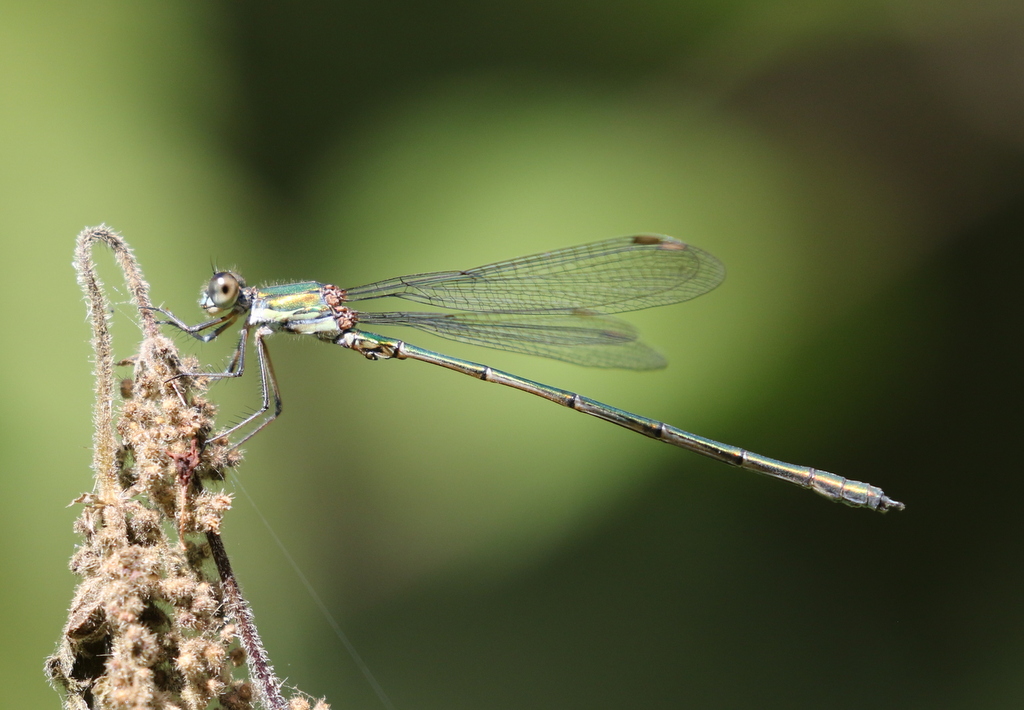
Across yesterday and this morning, we had already heard several Robins calling or singing, but they can be remarkably elusive at this time of year. As we walked back from the minibus after lunch, we finally got a good look at one in the trees by the car park, singing.
We made our way out along the main path next, to explore the rest of the reserve. Another Cetti’s Warbler was singing in the bushes on the edge of the reedbed by the path, and this time we could just make it out in the leaves as it moved through the sallows. We stopped for a quick look at the reedbed pool, but there was no sign of the Great White Egret which had been on here earlier, just a couple of drake Common Pochard now.
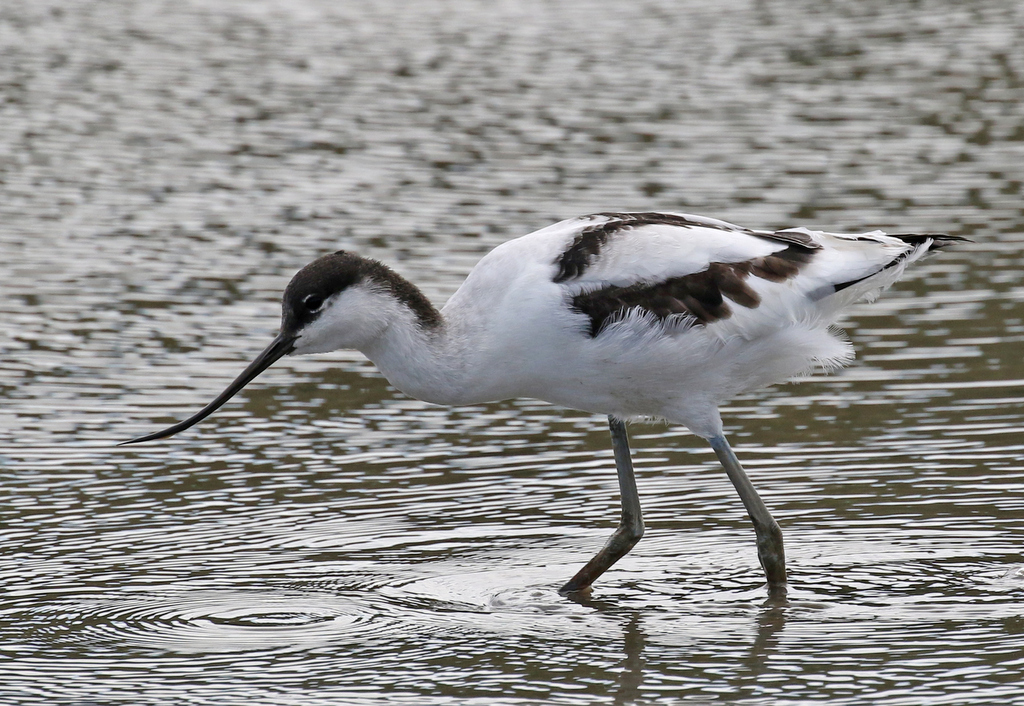
There were lots of waders on the Freshmarsh so we went down into Island Hide to look through them. One Avocet was feeding right outside the hide, but there were lots more further out, over towards the back.
There were lots of Ruff and Lapwing on the mud too, but with the water level low at the moment they were mostly not so close today. One Lapwing was feeding on the drier mud right outside the hide, the iridescent plumage of its upperparts shining green, bronze and purple in the sunshine.

A large flock of diminutive Dunlin was feeding busily in the water beyond the mud. Looking through them carefully, we found a single juvenile Curlew Sandpiper in with them, slightly larger, longer-billed, and cleaner white below than the spot-bellied juvenile Dunlin. Further back still, some large groups of Black-tailed and Bar-tailed Godwits were mostly asleep. In amongst them were a few Knot, with one adult still partly in breeding plumage, orange below.
A single Common Snipe was asleep in the vegetation on the mud over towards the reeds, and further back, three Common Sandpipers were feeding on a small pool along the edge of the reedbed. Even though they were distant, through the scope we could see the distinctive notch of white between the grey breast and wings.
There was still one Spoonbill left on the small island, where we had seen the three earlier, distantly from the end of the Autumn Trail before lunch. It did wake up from time to time and flash its yellow-tipped black bill, an adult.

Somebody in the far side of the hide spotted a Great White Egret flying across over the reedbed and the next thing we knew there were two in the air together. They chased each other round, then came straight towards us, their long trailing legs, long rounded wings and slow, heavy wingbeats different from the commoner Little Egrets, as well as their long yellow-orange bills. One Great White Egret even landed briefly on the mud in front of the hide, but quickly took off again and chased after the other. They eventually dropped down out of view in the reeds.
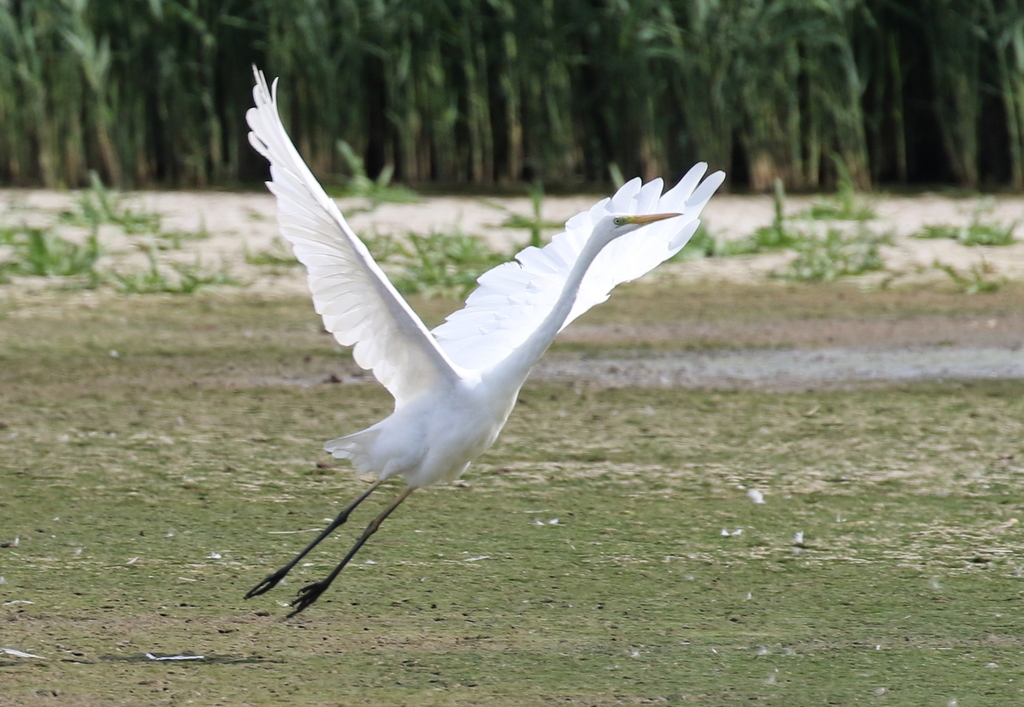
From up on the main path, with the water level low, we could see the mud was fairly dry and there was nothing in front of Parrinder Hide, so we continued straight out towards the beach. There were a few Common Redshanks on Volunteer Marsh, along with one or two Curlew. Two smart Grey Plover were rather distant, at the back of the channel at the far end, but we had a nice view of them in the scope, still in breeding plumage and sporting black faces and bellies.
The ‘Tidal’ Pools held more Common Redshanks and Curlew. Two (Ruddy) Turnstones flew in and landed on a small muddy island, where, in the absence of any stones, they started turning bits of dead vegetation over, looking for invertebrates underneath. A large mob of Oystercatchers was asleep on the big island, and several Ringed Plovers were out on the end of the spit nearby.
Out at the beach, the tide was coming in and had already covered the mussel beds, which is why the waders were all roosting on the pools. The sea looked fairly quiet, but we did pick out a few distant Sandwich Terns passing offshore, and three closer Common Terns, including one adult carrying a fish which glinted in the sunshine.
On the walk back past the Freshmarsh, we stopped to look through the gulls. There had been a report of a juvenile Caspian Gull here earlier, but all we could find now was an immature Lesser Black-backed Gull, a second calendar year, doing a passing impression of one. However, we did manage to dig out an immature Mediterranean Gull (again a second calendar year) in with all the Black-headed Gulls and an adult Yellow-legged Gull asleep on its own on one of the other islands.
On our way back east, we decided to take a roundabout route inland to try to add some more birds to the list. We were particularly hoping to find some raptors, and we quickly located two Common Buzzards and a juvenile Marsh Harrier in a stubble field. One of the Buzzards was feeding on something, the others waiting patiently to see if there would be anything left over.
Much of the journey subsequently was fairly quiet in the heat of the afternoon, but we eventually found a Kestrel, perched in the trees beside the road. We were almost back to Wells when we spotted a Red Kite over some trees. We had to find somewhere to pull in and a gap in the hedge, but then we stood and watched four Red Kites circling over a stubble field.

It had been a very enjoyable two days out birding in Norfolk with over 100 species seen, and some good photo opportunities too, a great introduction to UK birds.
















